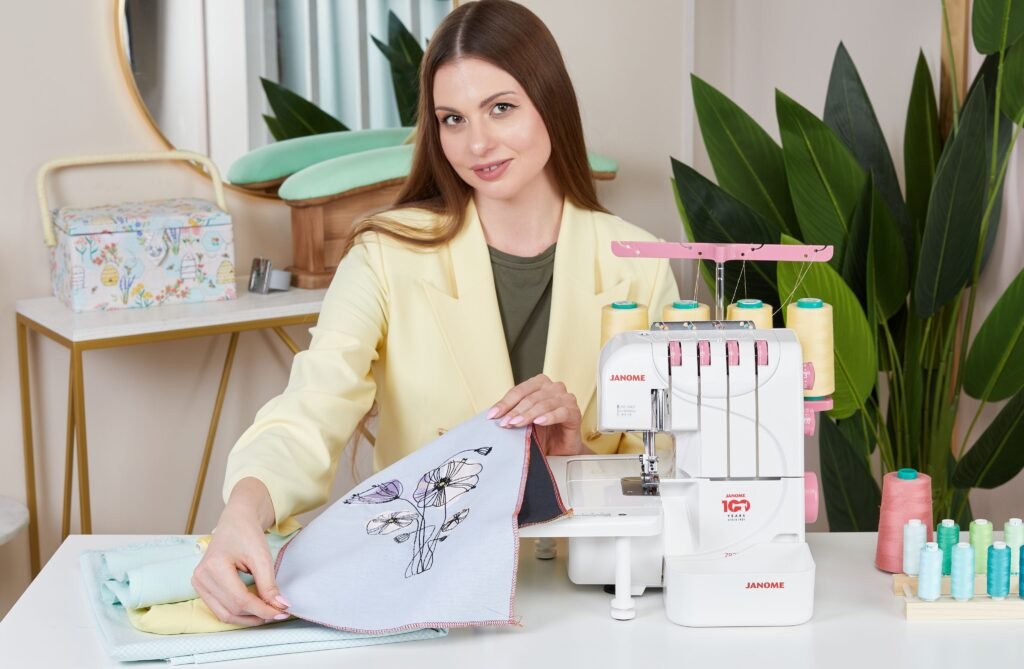Let’s talk about the unsung hero of embroidery – stabilizer. That unassuming sheet of material you put behind or under your fabric makes all the difference between a professional-looking stitch-out and a puckered, distorted mess. Whether you’re new to machine embroidery or you’ve been stitching for years, understanding embroidery stabilizers is the secret weapon that’ll take your work from “meh” to magnificent.
Why Stabilizer Isn’t Optional
Imagine building a house on quicksand – that’s what embroidering without stabilizer is like. The hundreds (or thousands) of stitches pulling on your fabric create tension that needs counterbalance. Stabilizer acts like scaffolding, providing temporary support during stitching that you’ll later remove (mostly). It prevents puckering, keeps stitches even, and helps intricate details stay crisp. The right stabilizer can mean the difference between a design that looks store-bought and one that looks homemade in the worst way.
The Three Main Stabilizer Types
1. Tear-Away: The Everyday Workhorse
Tear-away stabilizer is exactly what it sounds like – you stitch through it, then tear away the excess after. This stiff, paper-like material comes in various weights and is perfect for:
- Woven fabrics like cotton or linen
- Designs with lots of fill stitches
- When you want easy cleanup
The downside? It can leave little fuzzy bits behind on delicate fabrics, and isn’t great for stretchy materials since it doesn’t flex with the fabric after washing.
2. Cut-Away: For Permanent Support
Cut-away stabilizer stays with your project forever – you trim away only the excess around the design after stitching. Made from durable, non-woven material, it’s the go-to choice for:
- Stretchy fabrics (knits, jersey, performance wear)
- Items that’ll get heavy use and washing (like baby clothes)
- Large, dense designs that need long-term stability
It’s more forgiving than tear-away since you don’t have to worry about tearing too hard and distorting stitches. The tradeoff? It adds a bit more stiffness to your finished piece.
3. Wash-Away: The Invisible Helper
Magic happens with wash-away stabilizer – you stitch through it, then dissolve it in water after. This transparent film or mesh is ideal for:
- Delicate fabrics that can’t handle picking at leftover stabilizer
- Freestanding lace designs
- Projects where you don’t want any stabilizer visible
There are two main types – water-soluble (completely disappears) and heat-away (vanishes when ironed). Just be careful – some cheaper brands can leave a slight residue.
Specialized Stabilizers for Tricky Situations
Beyond the big three, there’s a whole world of specialty stabilizers:
Topping: A wash-away layer placed on top of tricky fabrics like towels or fleece to prevent stitches from sinking in.
Adhesive: Has a sticky back to hold fabrics in place – great for slippery materials or when hooping is impossible.
Mesh: Ultra-lightweight for delicate fabrics like silk or chiffon where heavy stabilizer would show through.
No-show: Super thin cut-away designed to be nearly invisible on lightweight fabrics.
Temporary spray adhesive: Not a stabilizer itself but helps keep layers together during stitching.
Choosing the Right Weight
Stabilizers come in different weights like thread:
- Lightweight: For delicate fabrics and small designs
- Medium: The most versatile for everyday projects
- Heavyweight: For dense designs or stiff fabrics like denim
A good rule of thumb: match the stabilizer weight to your fabric weight. Heavy denim? Go heavyweight. Sheer chiffon? Lightweight all the way.
The Hooping Question: To Hoop or Not to Hoop?
Some embroiderers swear by hooping their stabilizer with the fabric, others prefer the floating method (where only the stabilizer is hooped). Here’s when each works best:
Hoop both when:
- Working with stable woven fabrics
- Your design has lots of dense fills
- Precision placement is crucial
Float when:
- Dealing with stretchy or delicate fabrics that distort in hoops
- Embroidering pre-made items that can’t be hooped
- Working with bulky materials like jackets
Stabilizer Hacks Every Embroiderer Should Know
- The Sandwich Method: For tricky fabrics, use stabilizer on both top and bottom.
- Direction Matters: Tear tear-away stabilizer in the direction of the grain for cleaner edges.
- Double Up: For extra-stretchy fabrics or large designs, layer two pieces of stabilizer.
- Test First: Always stitch a test run on scrap fabric with your chosen stabilizer combo.
- Trimming Tricks: Trim excess stabilizer close to stitches before tearing/cutting to minimize bulk.
Common Stabilizer Mistakes to Avoid
Using the wrong type: That tear-away might seem fine on your knit shirt… until the first wash when everything puckers.
Skimping on size: Your stabilizer should extend at least 2-3 inches beyond your design area.
Ignoring fabric content: What works on cotton might fail miserably on performance mesh.
Forgetting to test: That new stabilizer-fabric combo might react differently than expected.
Over-stabilizing: Too much can make your project stiff as cardboard.
Stabilizer for Specific Fabrics
Knits/T-shirts: Cut-away is your best friend to prevent stretching out over time.
Towels/Fleece: Use topping to keep stitches from disappearing into the pile.
Denim/Canvas: Medium-weight tear-away usually does the trick.
Sheer Fabrics: Lightweight wash-away keeps things delicate.
Leather/Vinyl: Adhesive stabilizer prevents needle holes from showing around designs.
When to Break the Rules
Like all crafts, embroidery has guidelines rather than hard rules. Sometimes:
- A medium tear-away might work fine on stretchy fabric for a small design
- You might float when others would hoop (or vice versa)
- Mixing stabilizer types can solve unique problems
The key is understanding why the “rules” exist so you know when bending them might work.
Stabilizer Storage Tips
Keep your stabilizer in good shape:
- Store rolls upright to prevent curling
- Keep away from moisture and direct sunlight
- Label partial sheets with weight/type so you don’t mix them up
- Consider a hanging file system for cut pieces
The Future of Stabilizers
Innovations are making stabilizers smarter:
- Printable stabilizers you can run through your inkjet printer for precise placement
- Eco-friendly options made from recycled materials
- Multi-purpose stabilizers that combine backing and topping in one
Your Stabilizer Cheat Sheet
When in doubt:
- Identify your fabric type (woven, knit, delicate, etc.)
- Consider your design (size, stitch density, etc.)
- Think about the item’s use (will it be washed/stretched often?)
- When possible, test first
The Bottom Line
Great embroidery isn’t just about the machine, the thread, or even the design – it’s about giving those stitches the proper foundation to shine. Taking the time to choose the right stabilizer might seem like an extra step, but it’s what separates the amateurs from the pros. Your future self (and your embroidery) will thank you for not cutting this particular corner.
Now go forth and stabilize like a boss – your stitching adventures are about to get a whole lot smoother.







